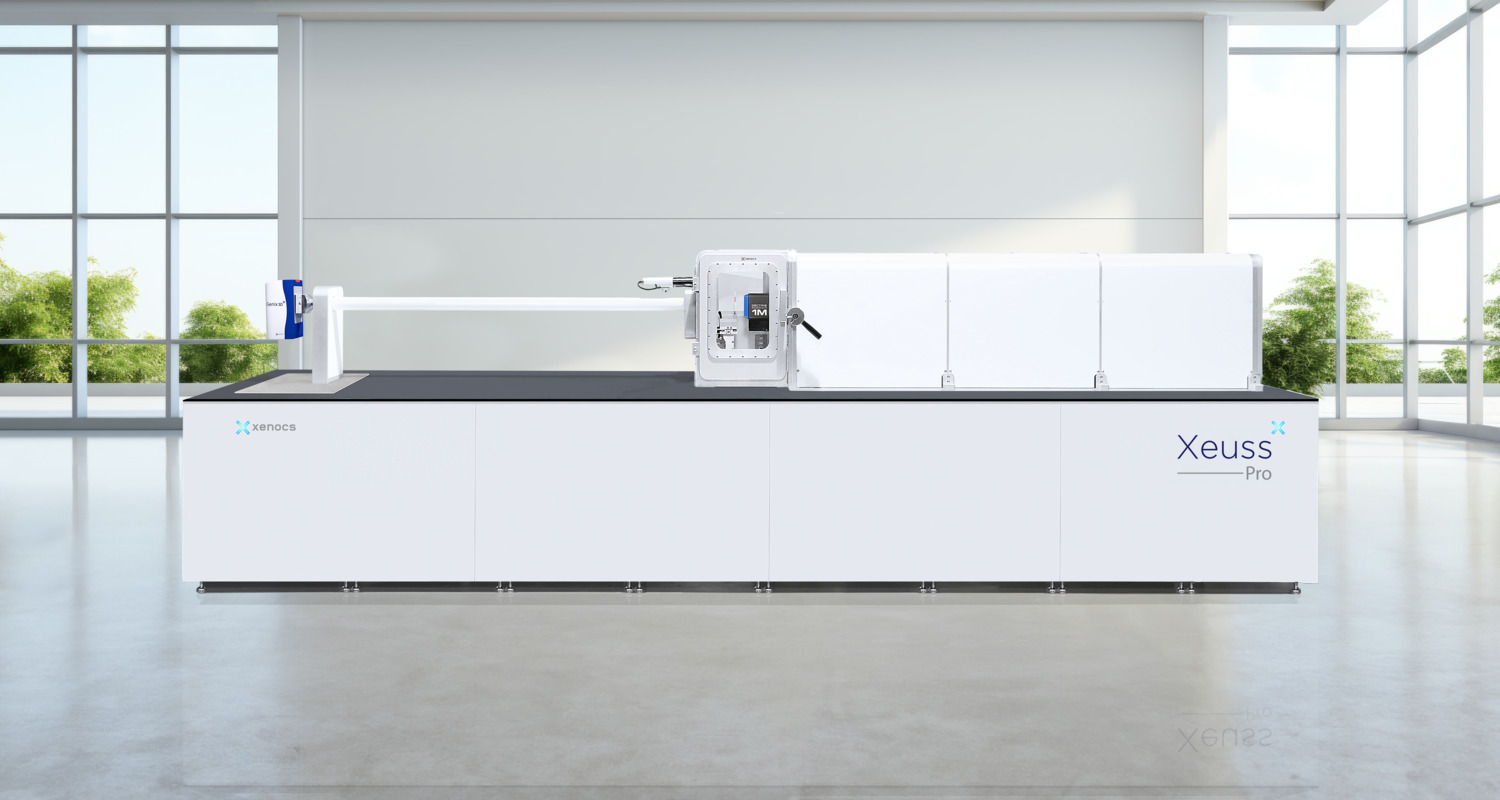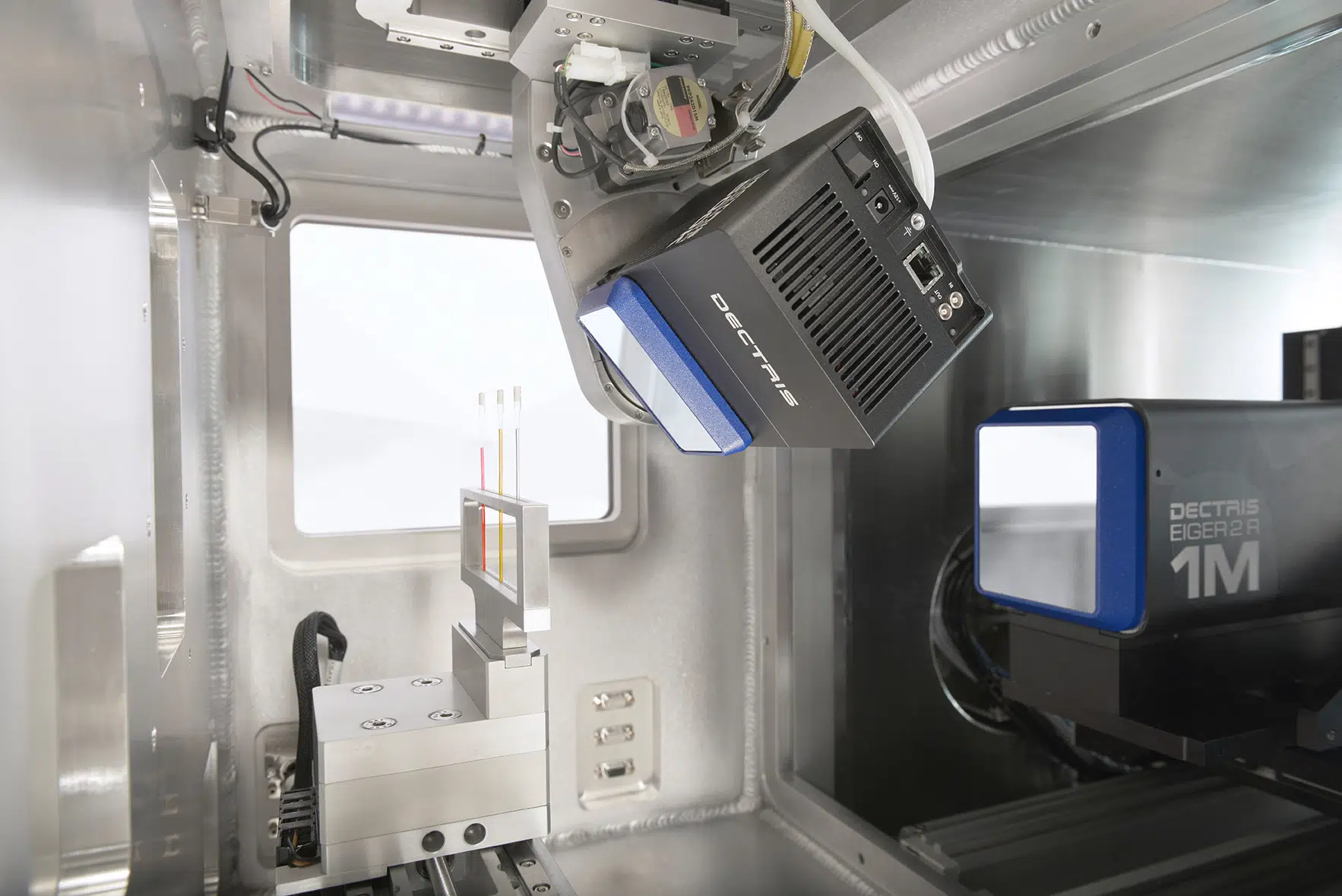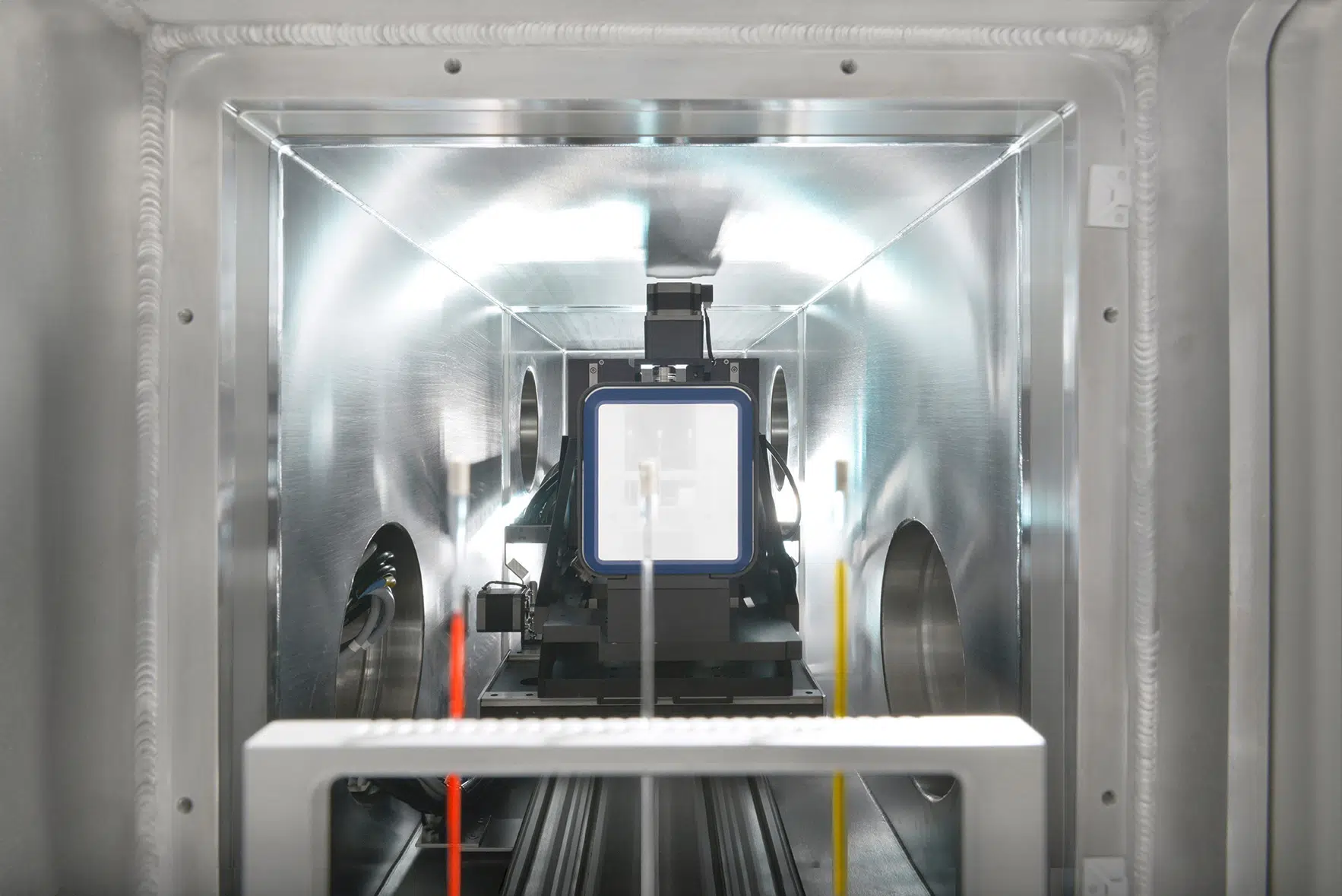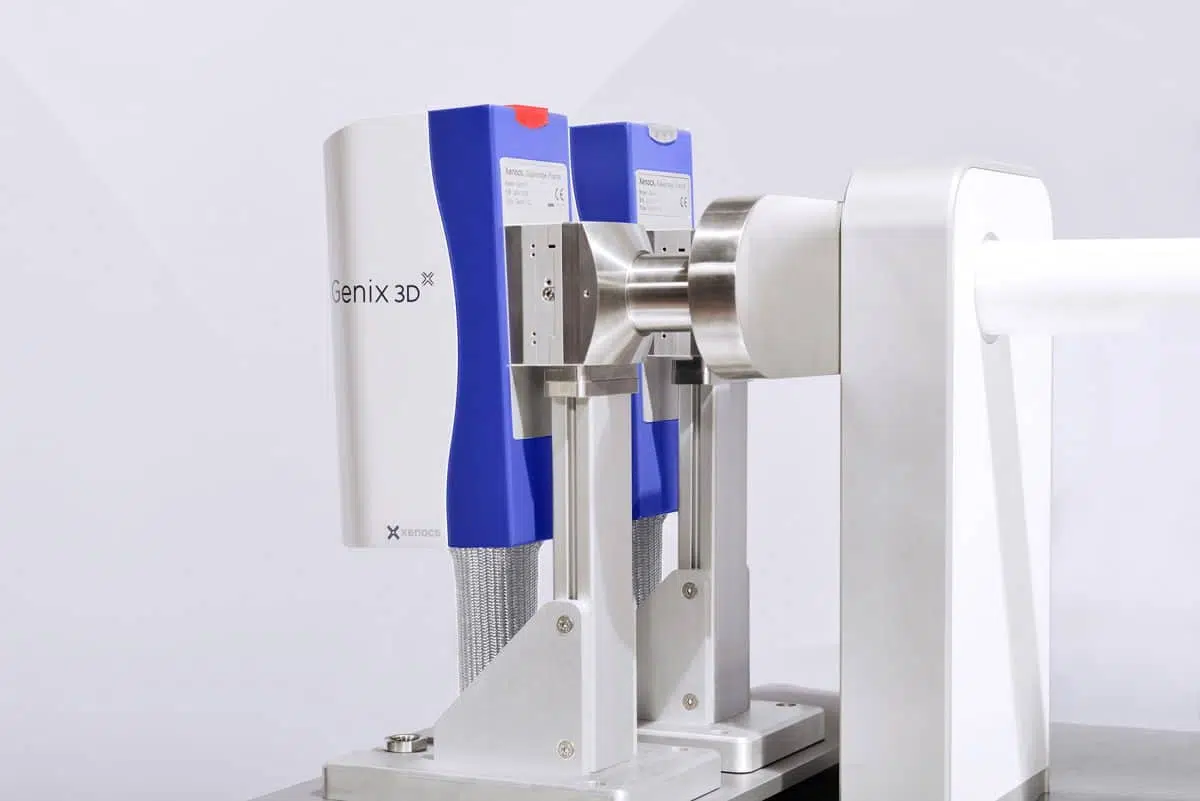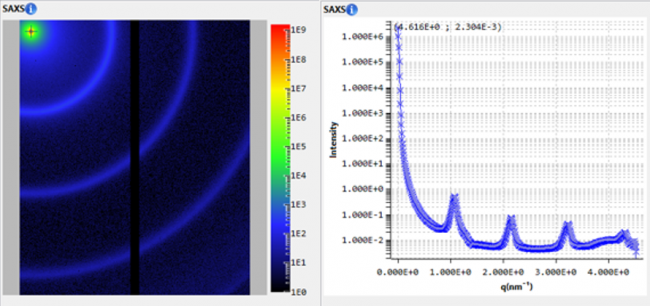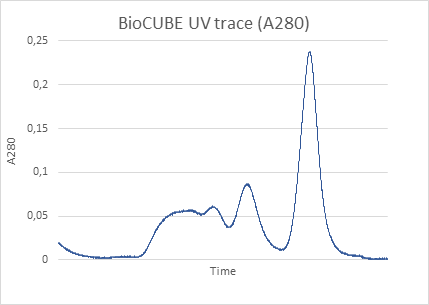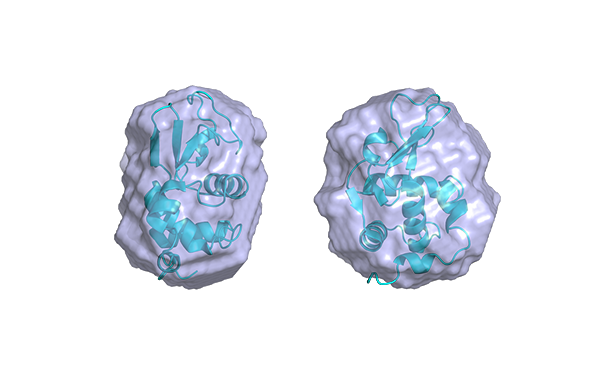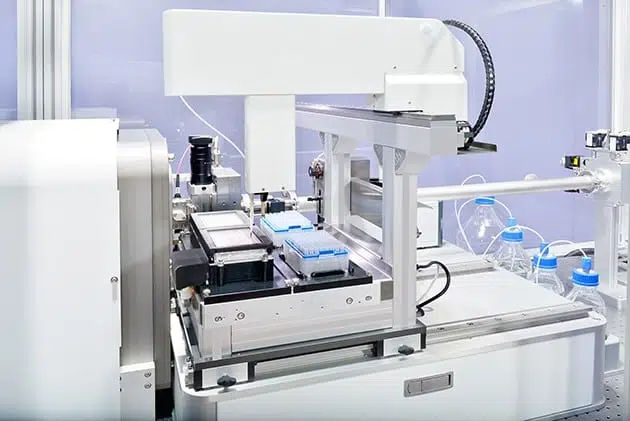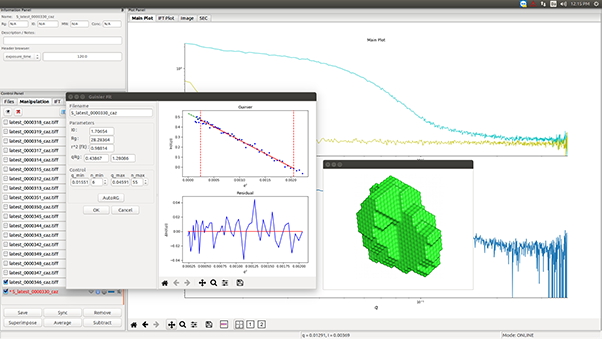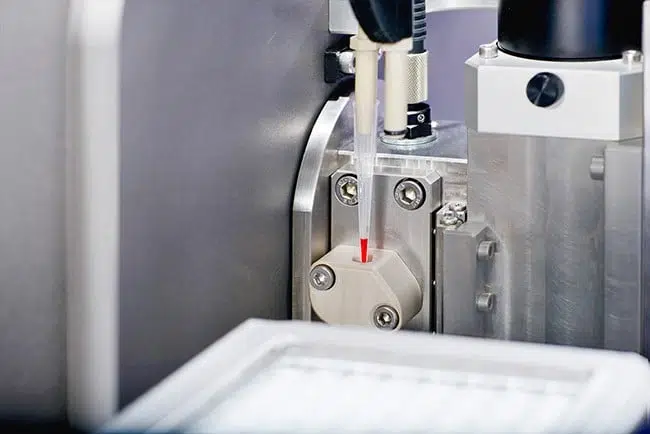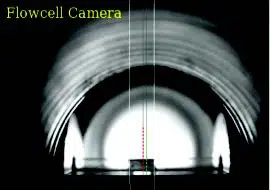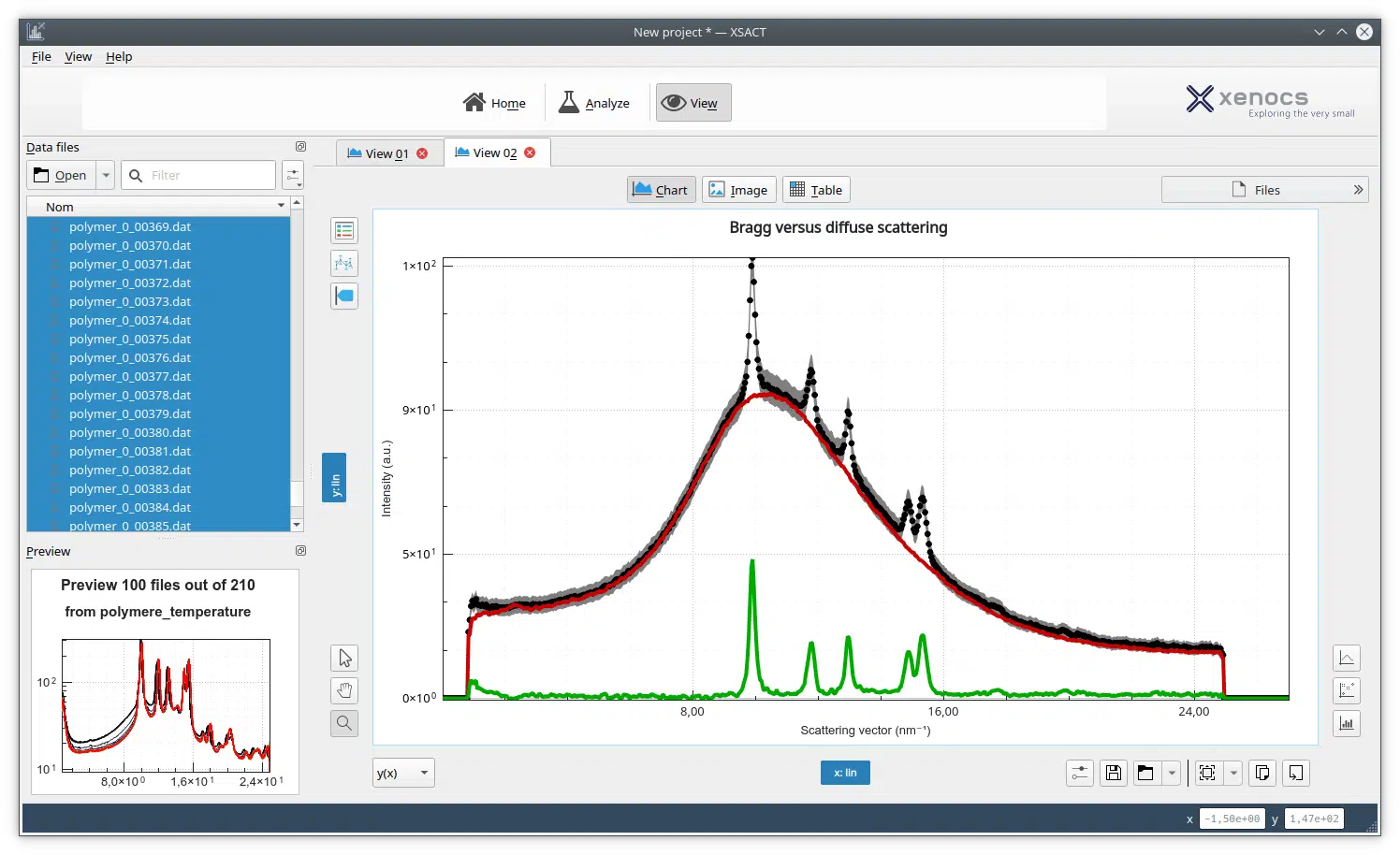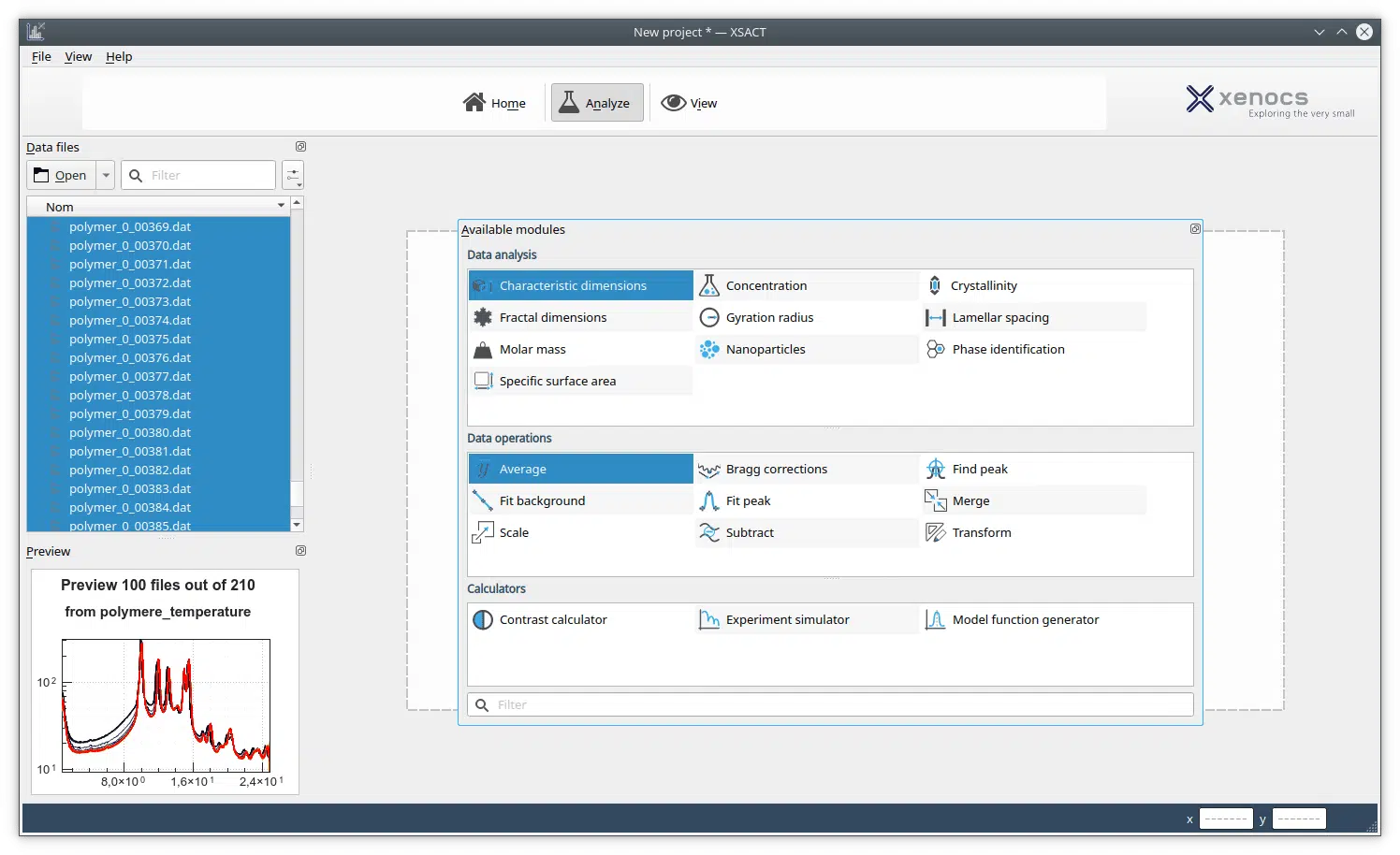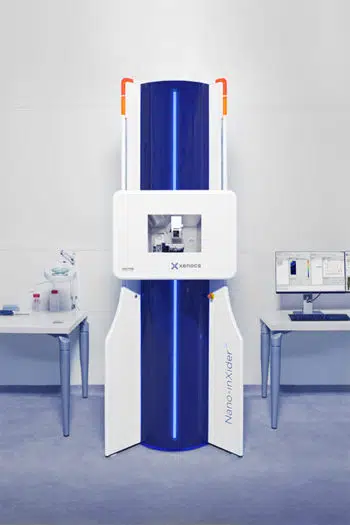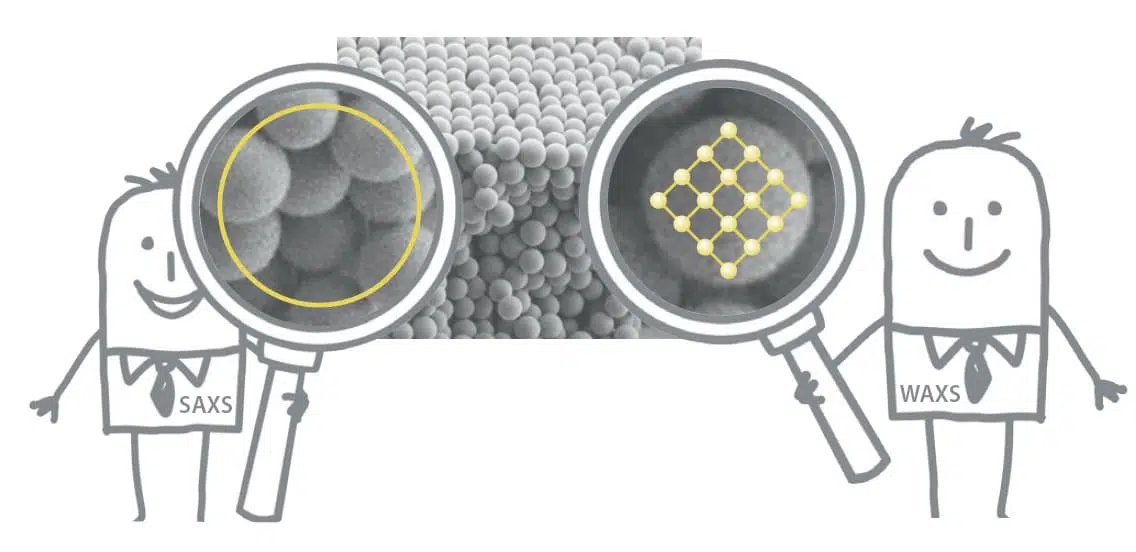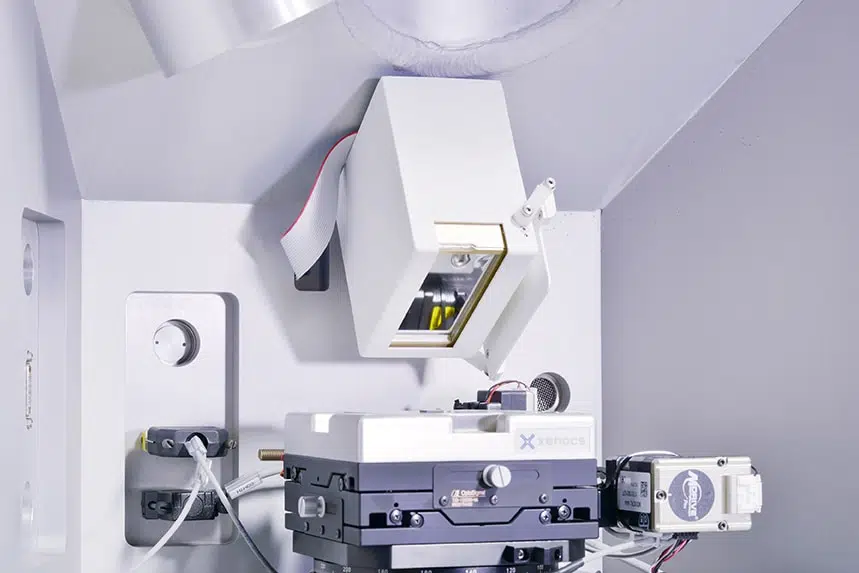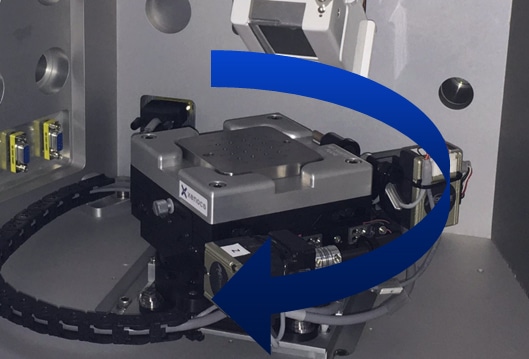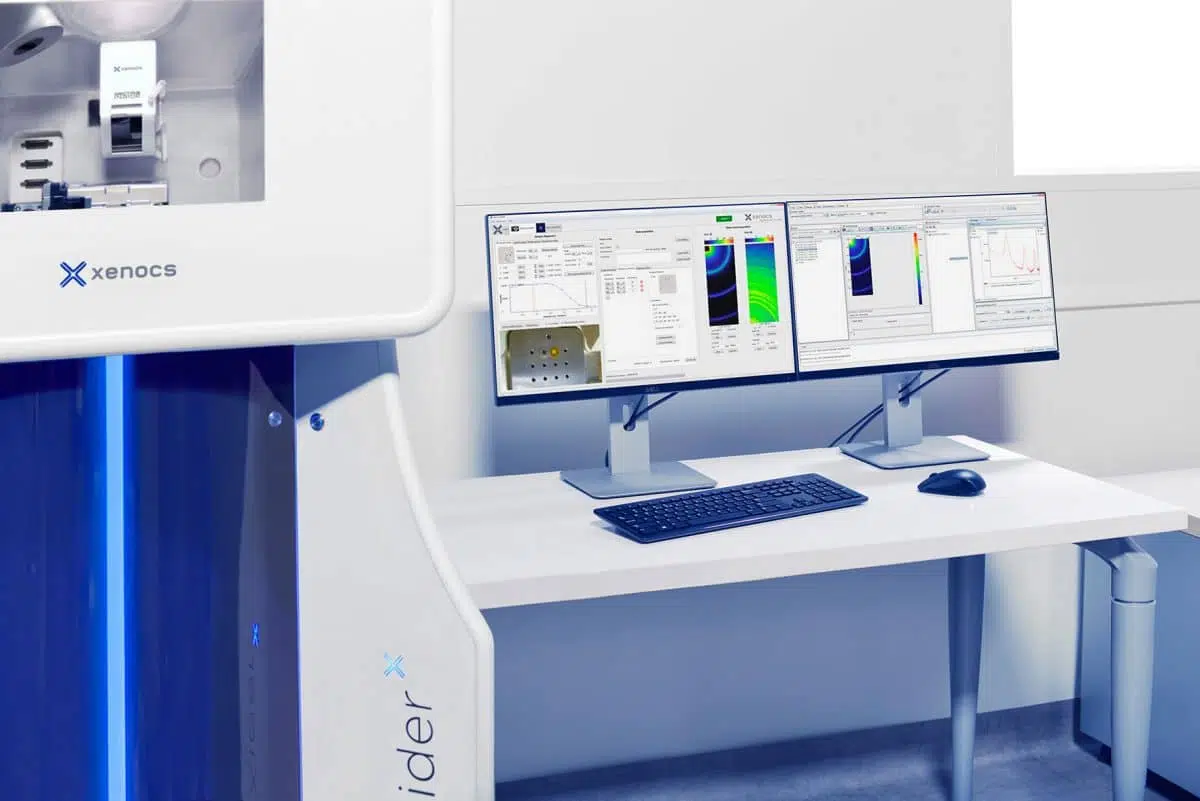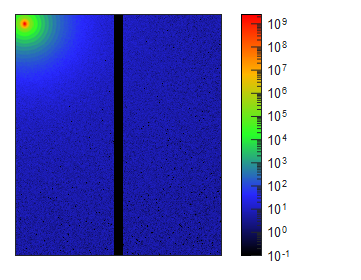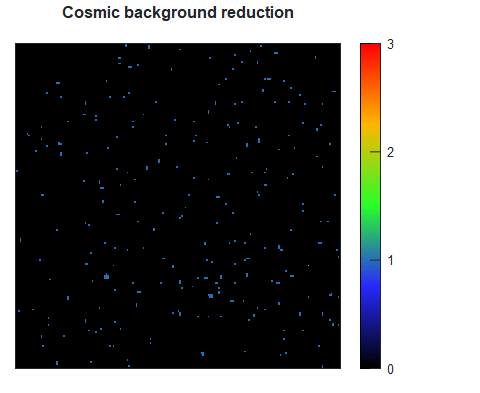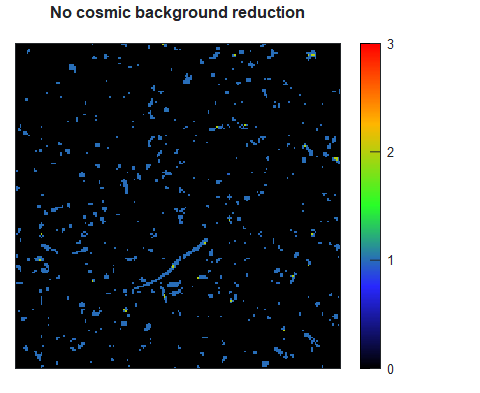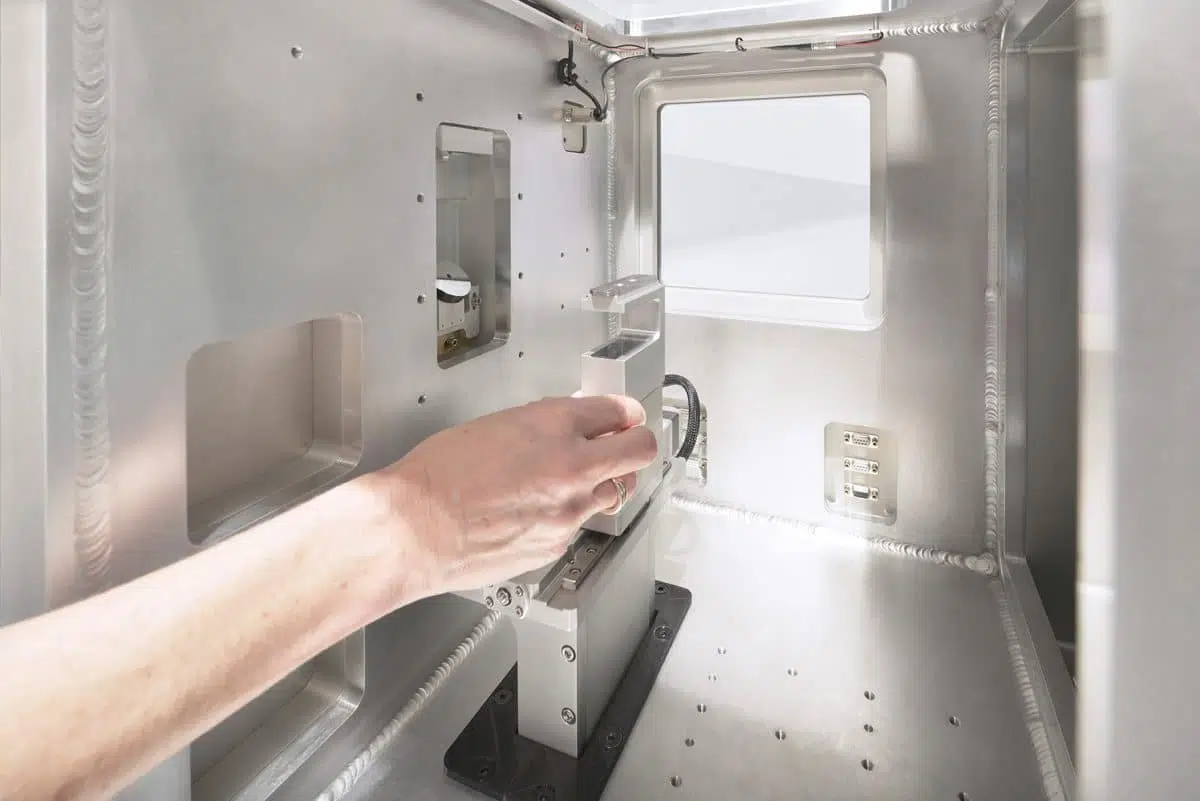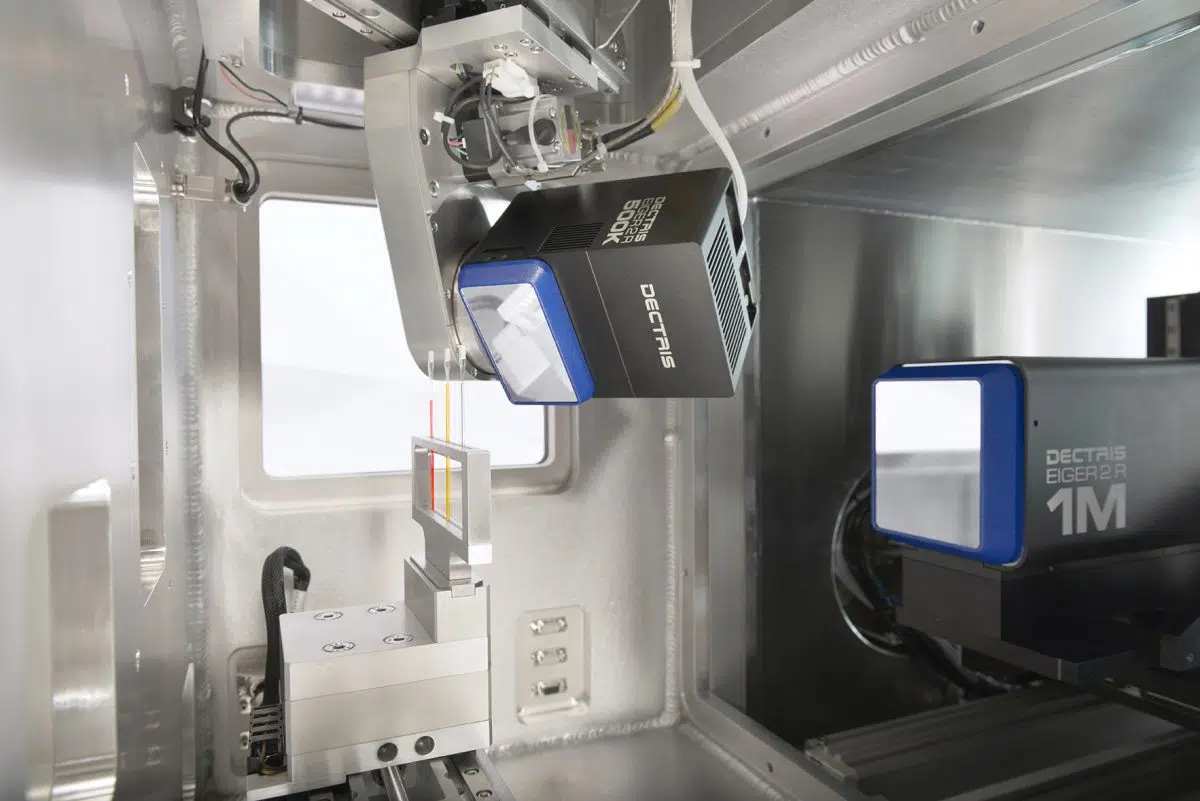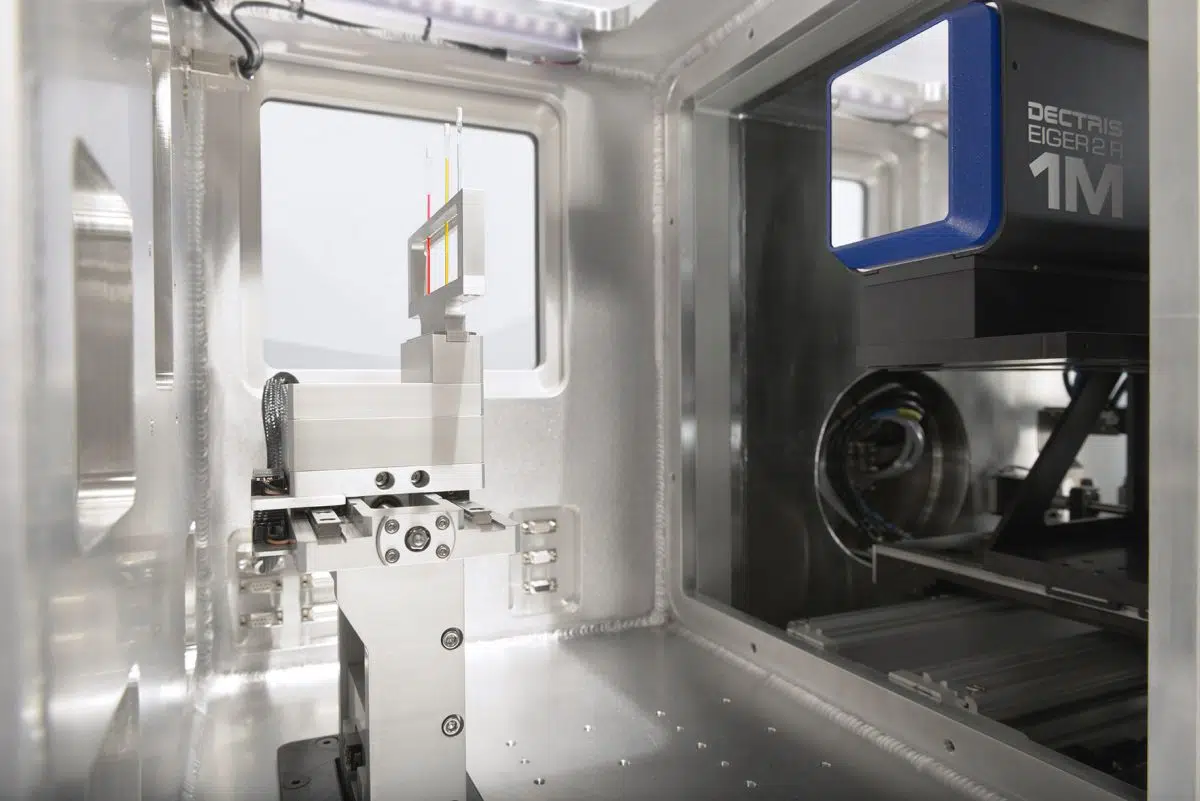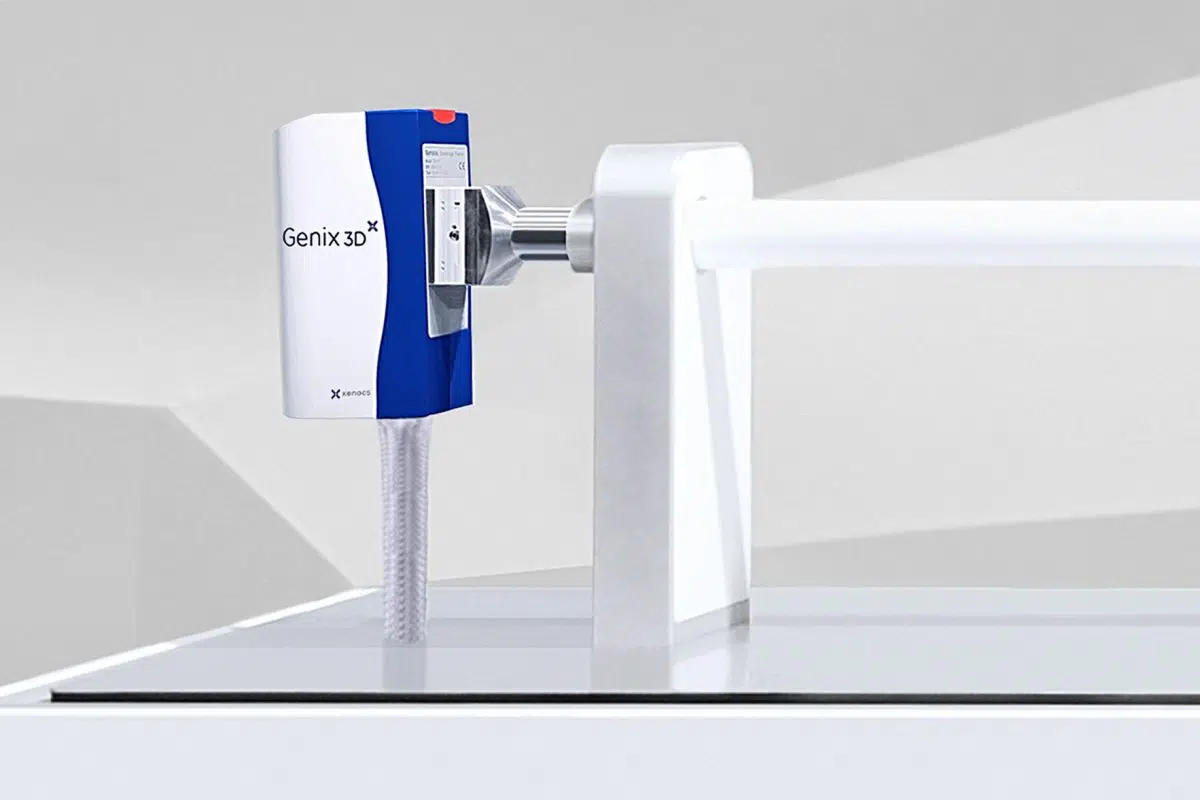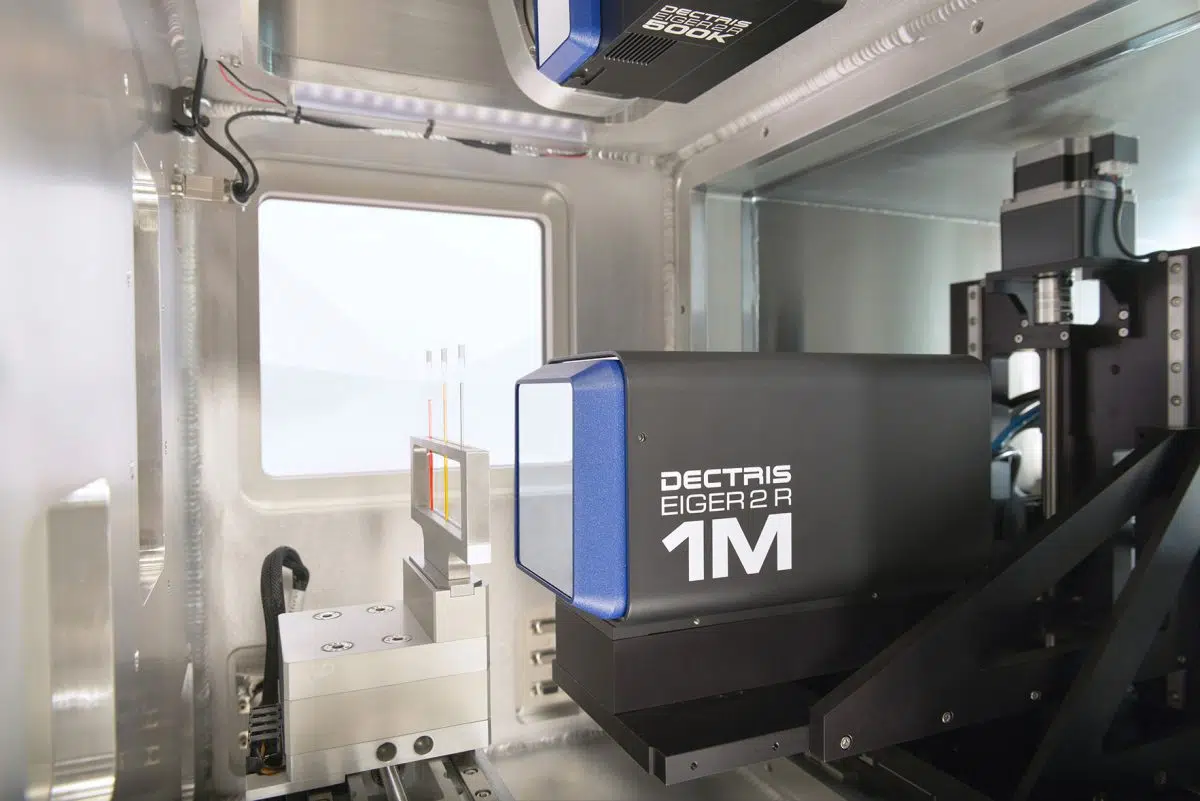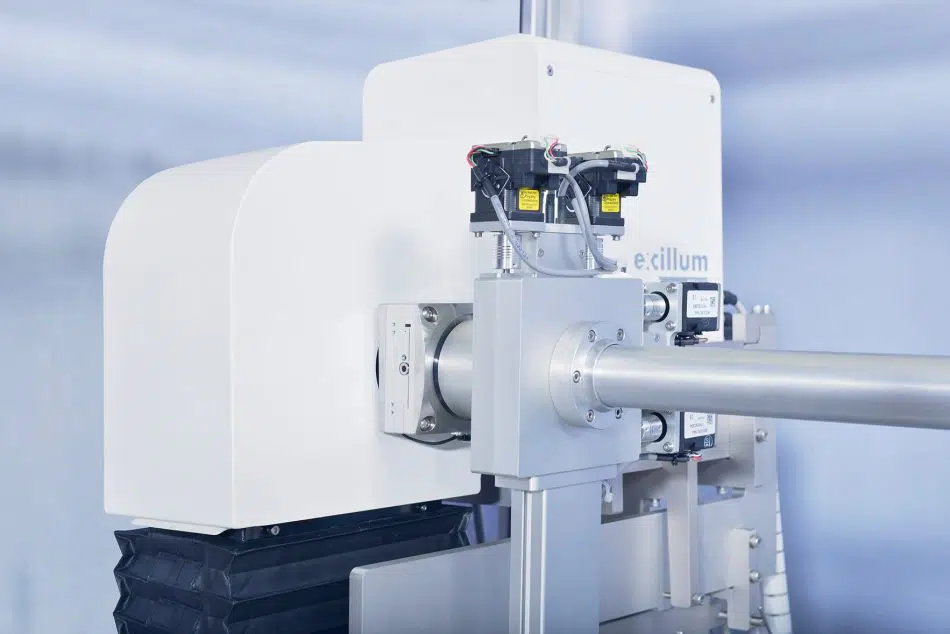Small Angle X-ray Scattering (SAXS) is an analytical technique giving access to information about the structure of materials at the nano- and meso-scale.
What is SAXS ?
Measurements can be made on almost any sample, but most often is used for soft matter and nanostructured materials. SAXS is a primary characterization tool for polymers, surfactants, colloids, proteins, porous media, nanoparticles and nanocomposites.
SAXS can be performed on samples in a dynamic or controlled environment, such as temperature, stress, humidity, pressure, concentration, in order to understand the link between structure and function or response.
Which information does SAXS give?
SAXS provides unequivocal determination of nanoscale structural and morphological information in any almost exhaustive range of materials, such as polymers, surfactants, colloids and proteins.
More specifically, the size domains measured by SAXS are continuously probed between roughly 1 nm to hundreds of nanometers, and can even extend to microns with Ultra-SAXS.
Some examples where SAXS is the unique measurement tool are:
- the structure determination of lamellar phase dimensions in Polyolefins
- identification of phases in block copolymers, surfactants and molecular objects, including quasi-crystalline and Frank-Kasper phases
- size and shape of micelles used in soaps, detergents and personal care products
- unambiguous determination of size in colloids used as additives to food, drugs and personal care products.
- nanoparticle size distribution
In structural biology, SAXS has long been used to provide shape analysis of proteins in solution, DNA & RNA assemblies, virus dimensions and shape, and combinations of all these – information not available by the standard tools of protein crystallography. Protein and antibody dynamics can be inferred by comparing the SAXS to structural models. Furthermore, protein stability can be studied under changing conditions.
Select an application of SAXS below to learn more:
How does SAXS work?
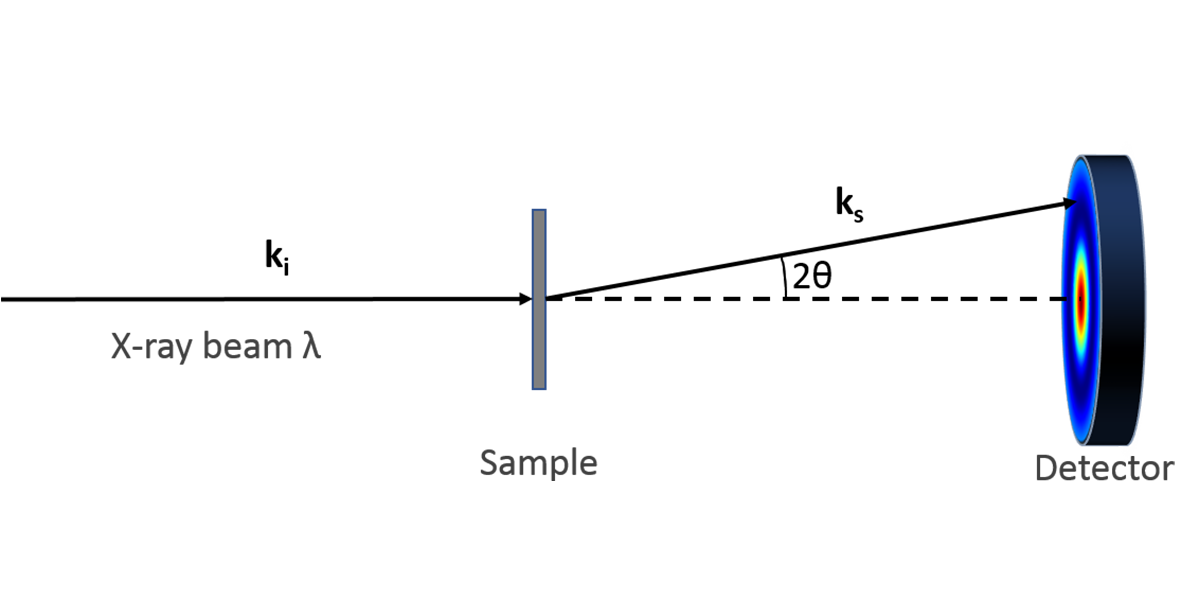
In a typical experiment, a highly collimated beam of monochromatic x-rays is transmitted through a sample on the order of 1 mm in thickness. The scattered x-rays are collected on a 2-dimensional area detector azimuthally in 360 degrees at a continuous range of scattering angles which deviate from the direct, transmitted beam. The scattering angle, which we define by convention as 2θ, defines a “probe length” expressed as D =2π/q, where q = 4πsin(θ)/λ, in which λ is the wavelength of the x-rays (typically 0.154 nm for the Cu x-ray source).
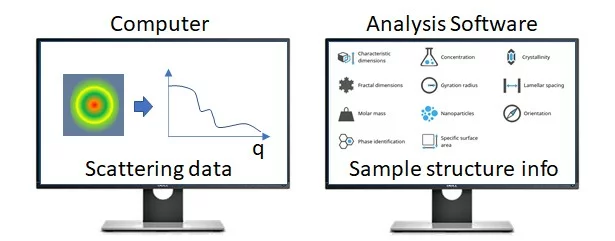
In the most common manifestation of a large molecular assembly (particle, lamellae, etc.), a peak in the scattering intensity as a function of q indicates dominant size at the corresponding D = 2π/q. Further analysis is used to refine the structure based on modeling the electron density variations in the material under study.
Advantages of SAXS
SAXS is a primary characterization tool that can provide structural information describing how large molecules are shaped and organize in any sample.
SAXS is accessible to the home laboratory, and does not require any extensive sample preparation, since the scattering contrast is determined by the inherent electron density differences native to the sample under study.
The only comparable tool is the neutron analog SANS (Small Angle Neutron Scattering), but this obviously requires a source of neutrons from a reactor or spallation facility, with the added burden/benefit of isotopic labelling to maximize neutron scattering contrast.
Other approaches by direct imaging are possible with electron microscopy and scanning probe microscopies, but these are limited to thin or topographic samples, respectively, and the results are non-statistical sample representation.
Dynamic and Static Light Scattering (DLS and SLS) are used in solution studies, but the results are model dependent and optical wavelengths will not provide the level of structural resolution for anything smaller ca. 0.5 µm.
What is WAXS?
If we refer to SAXS, we should mention Wide Angle X-ray Scattering (WAXS).
WAXS is the technique that is most identified with molecular structure at the resolution of atomic positions, and is sometimes used synonymously with x-ray diffraction. The term x-ray diffraction conventionally describes the discrete scattering associated with crystalline samples, either in a single oriented crystal or a powder composed of small, randomly oriented crystals packed together.
The important distinction between SAXS and WAXS is that the WAXS measures the x-rays scattered into angles large enough to define probe lengths that are comparable to atom-atom spacings and atomic planes in a crystal. Because the intensity of the scattered x-rays are measured at higher angles, the collimation and flight path requirements are more compact for a dedicated WAXS instrument relative to instruments optimized for SAXS.
What is GI-SAXS (and X-ray Reflectivity)?
Although most samples are measured by SAXS in transmission, a Grazing Incidence (GI) geometry can be adopted in which the incident x-ray beam is totally externally reflected from a sample surface. In GI-SAXS, the incident beam propagates in the surface plane and is constrained to the surface region by evanescence (exponential decay) in the sample depth. The scattering observed on the two-dimensional detector provides structural information limited to ca. 30 nm depth in organic materials.
Once a sample is aligned for GI-SAXS, the intensity of the specularly reflected x-rays can be measured as a function of angle to construct an X-ray Reflectivity (XRR) curve. We can consider XRR an extension of SAXS in which there is only one well-defined surface as opposed to an exhaustively randomized collection of surfaces and orientations in a bulk transmission SAXS. Analysis of the XRR provides the electron density profile normal to the surface and this profile can be used as input to the GI-SAXS analysis.
Of course, the scattering under Grazing Incidence conditions can be extended to wide angles as well, and GI-WAXS is used when appropriate; for example, determining the structure and orientation of crystalline domains in a surface film.
Some SAXS literature
Here is a relevant list of references that cover SAXS and general x-ray scattering applications:
- Basic X-Ray Scattering for Soft Matter 1st Edition, Wim H. De Jeu, Oxford (2016)
This is a general introduction to x-ray scattering from Soft Matter. It includes good examples from the literature. - Elementary Scattering Theory: For Xray And Neutron Users 1st Edition, D.S. Sivia, Oxford (2011)
Excellent introduction to scattering, starting at an introduction to the required math and formalism.
- Elements of Modern X-ray Physics 2nd Edition, J. Als-Nielsen and D. McMorrow, Wiley (2011)
A little more advanced, but highly accessible, this provides more detail to scattering and other complementary techniques like XAFS and Imaging. It includes specific synchrotron applications. - The Physics of Polymers, Concepts for Understanding Their Structures and Behavior, G.R. Strobl, Springer (2007)
Specific to polymers and very thorough. While scattering is not the main focus, it figures prominently and demonstrates that scattering is a primary tool for polymer science.
Publications with SAXS
The number of publications using SAXS as a research technique has been growing exponentially in recent years.
Where can I make SAXS experiments?
Thanks to advances in X-ray technology and software, turn-key SAXS instruments that produce publication-worthy results are available to research laboratories at any home institution. In addition, SAXS synchrotron beamlines are available on a proposal basis for “extreme” experiments such as fast dynamics or very small area of measurement.
SAXS Products
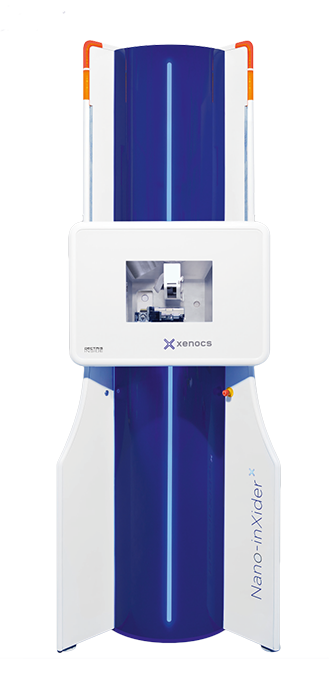
Xeuss Pro
The Ultimate Solution for Nanoscale Characterization using SAXS/WAXS/GISAXS/USAXS/Imaging
